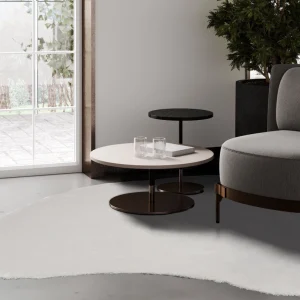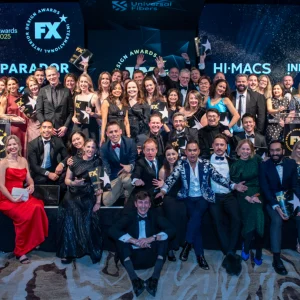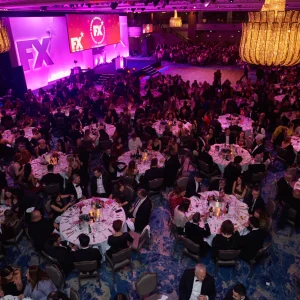Edited By Jill Entwistle
Graeme Shaw
technical director UK and Ireland, Zumtobel Group
IT IS IMPERATIVE that the lighting industry shifts from a focus on conserving energy to valuing human wellbeing. Biophilic design should emerge as a trend for 2024, with its potential to alleviate stress, boost creativity, and enhance mental clarity by connecting occupants to nature within buildings – all reasons why it needs to be taken more seriously.
While we focus on costs, we forget that people account for 90% of a building’s operating cost, with lighting costs being a mere 1%. Lighting needs to optimise human potential, particularly in ofice, healthcare and education settings.
Research reveals that ‘healthy lighting’, which mimics daylight’s effects, can significantly enhance performance – 12% better for office employees, up to 18% for manual workers, and producing 14% higher scores for students. Retail sales also surge by up to 25% under such lighting conditions.
Whether we’re aware of it or not, people have a psychological and physiological need to connect with nature. In its absence – and windows are not always enough – we need to rethink the value of artificial lighting.
The further shift in 2024 towards human-centred lighting will be a significant departure from traditional energy-efficiency metrics but one that is needed. Embracing lighting solutions that prioritise wellbeing will redefine our interaction with light, not only brightening spaces but enhancing lives, creating healthier and more productive environments.
www.connect.zumtobel.com /SPECTRUM-good-lighting-for-people
Lisa Sutherland
marketing manager and export support, Stoane Lighting
 Sustainability has been the key focus for Stoane Lighting for more than fiive years now, with the ZTA product range, designed for the circular economy, launched in 2019. One of the company’s aims has been to find ways to incorporate captured waste into its products. The ZTA.50.PLP uses the core of a ZTA.50 fitting with a shade made partially from the mixed fine powder overspray from the company’s finishing processes and captured granulated waste acrylic, for example obsolete optics. The result is a terrazzo-style effect that can also include custom colours.
Sustainability has been the key focus for Stoane Lighting for more than fiive years now, with the ZTA product range, designed for the circular economy, launched in 2019. One of the company’s aims has been to find ways to incorporate captured waste into its products. The ZTA.50.PLP uses the core of a ZTA.50 fitting with a shade made partially from the mixed fine powder overspray from the company’s finishing processes and captured granulated waste acrylic, for example obsolete optics. The result is a terrazzo-style effect that can also include custom colours.
AS KNOWLEDGE and experience of how to be sustainable grows within lighting, so does a need to increase circularity and decrease embodied carbon through product design and manufacturing optimisation. We expect to see more use of recycled materials and waste capture in luminaires in future.
An essential part of the sustainability story is quantification. We hope that the next five years will see harmonisation of industry impact quantification matrices. We will continue to manufacture responsibly and learn as the industry grows, and hope we all continue to challenge greenwash and encourage transparency.
Environmentally speaking we must see more remanufactured luminaires on new lighting design schemes. The industry is shifting to and embracing circular approaches that value the equipment that already exists in a space, so hopefully we will see new trends in product design that will add more value to remanufacturing.
www.stoanelighting.com /products/zta-50-plp
Ulysse Dormoy
CEO, Atrium
 This year Atrium is introducing Fluxwerx, a member of the Canadian LMPG group, to the UK for the first time. The company’s optical technology is used to increase sustainability. The Aperture range features anidolic optical structures to disperse and mix light, eliminating any visible images of the LED source and ensuring accurate and consistent colour. The groundbreaking optical design enables them to achieve high lumen performance while ensuring a lifespan of 200,000 hours at L70.
This year Atrium is introducing Fluxwerx, a member of the Canadian LMPG group, to the UK for the first time. The company’s optical technology is used to increase sustainability. The Aperture range features anidolic optical structures to disperse and mix light, eliminating any visible images of the LED source and ensuring accurate and consistent colour. The groundbreaking optical design enables them to achieve high lumen performance while ensuring a lifespan of 200,000 hours at L70.
FROM MY PERSPECTIVE, the trajectory of lighting in the next four to five years will be influenced by several key pillars: size, performance, optic quality, lifespan, circularity, and health and wellbeing.
As LED technology advances, there will be a continued emphasis on developing smaller fittings with enhanced output, purposefully designed with circularity in mind. The trend will lean towards pushing luminaires to deliver more lumens, challenging the acceptability of traditional components such as opal or microprismatic diffusers on linear products, as an example. The future may see a shift towards innovative and well-designed optic elements, acknowledging that past solutions may not suffice.
Presently, well-designed luminaires can surpass the conventional 50,000-hour lifespan – however, product longevity is a critical path to sustainability.
 This year Atrium is introducing Fluxwerx, a member of the Canadian LMPG group, to the UK for the first time. The company’s optical technology is used to increase sustainability. The Aperture range features anidolic optical structures to disperse and mix light, eliminating any visible images of the LED source and ensuring accurate and consistent colour. The groundbreaking optical design enables them to achieve high lumen performance while ensuring a lifespan of 200,000 hours at L70.
This year Atrium is introducing Fluxwerx, a member of the Canadian LMPG group, to the UK for the first time. The company’s optical technology is used to increase sustainability. The Aperture range features anidolic optical structures to disperse and mix light, eliminating any visible images of the LED source and ensuring accurate and consistent colour. The groundbreaking optical design enables them to achieve high lumen performance while ensuring a lifespan of 200,000 hours at L70.
Lastly, the significance of light in relation to health and wellbeing is gaining momentum, especially through various online vlog and blog channels. Anticipate a notable shift away from lower quality LEDs, with a potential future where only CRI90+ options prevail. Recognising the critical role of light quality for human wellbeing – even though artificial lighting cannot fully replicate the sun’s quality and nutrients – there is a growing imperative to promote and provide the highest quality of light for various applications.
www.fluxwerx.com /technologies/optics
Ian Stanton
regional director, iGuzzini
 Light Shed Linen represents a number of current and future trends: it is a circular product (bio-based material, developed from flax, among other eco credentials); it has integrated sensors for daylight linking; voice, smartphone and smart button control; variable intensity and colour temperature (2700K-6500K) for visual comfort; and a softened design that can sit well in a range of environments from hospitality to office.
Light Shed Linen represents a number of current and future trends: it is a circular product (bio-based material, developed from flax, among other eco credentials); it has integrated sensors for daylight linking; voice, smartphone and smart button control; variable intensity and colour temperature (2700K-6500K) for visual comfort; and a softened design that can sit well in a range of environments from hospitality to office.
LIGHTING NEEDS to be smart, dynamic, sustainable and always improve the perception of spaces. From a technological point of view, it means that we see an increasingly present and, at the same time, hidden use of technology. Dynamic light is now a must.
Looking forward, we need to make it even more automated and responsive, so that it becomes more like natural light. This is why artificial intelligence will also play a leading role in our industry. This evolution has already begun: the integration of sensors makes the luminaire ‘intelligent’, that is, able to react to external conditions, and capable of being programmed with appropriate settings. In the future, it will probably not be necessary to programme the setting as the luminaire itself will know a priori what the best condition will be. We are now at an in-between stage.
The use of voice controls, of apps, makes light management increasingly easier, and this opens up another fundamental aspect of technological advancement, namely usability.
The use of smart lighting is also related to sustainability: the more that energy consumption is lowered, the more environmental impact will be reduced. On that subject, for the foreseeable future there will be continued research into the use of circular materials and solutions for a two-fold goal: the wellbeing of people and, therefore, of the planet.
With intelligent light at the core, the design of light fixtures will also be influenced and shaped by the concept of livability: people want to feel good, whatever space they are in. Design will soften, using finishes that match the space or reconnect people with nature.
www.iguzzini.com /light-shed-linen





